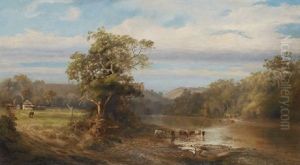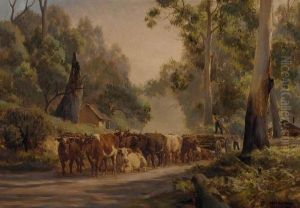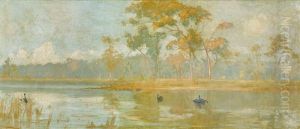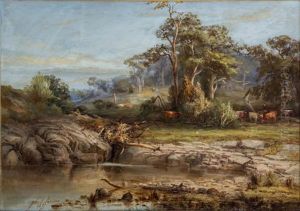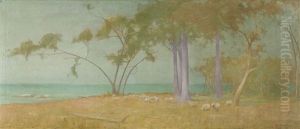John Ford Paterson Paintings
John Ford Paterson was an Australian artist known for his landscape and figure paintings. Born on January 25, 1851, in Melbourne, Victoria, he was one of the prominent figures in the Australian art scene during the late 19th and early 20th centuries. His work is often associated with the Australian Impressionism movement, though his style also incorporated elements of Romanticism and the Picturesque.
Paterson studied art under Eugene von Guerard at the National Gallery of Victoria Art School, which was a significant formative experience that influenced his approach to landscape painting. He furthered his education by traveling to Europe in the late 1870s, where he was exposed to the works of the Old Masters and the contemporary art movements of the time. This European sojourn allowed him to absorb various artistic influences, which he later melded with his unique vision of the Australian landscape.
Returning to Australia in the early 1880s, Paterson became an active participant in the Melbourne art community. He exhibited his work regularly with institutions such as the Victorian Academy of Arts and was involved with the art reform movement, which sought to promote an Australian style of art distinct from European traditions. His paintings often depicted the Australian bush, rural scenes, and pastoral landscapes, capturing the unique light and atmosphere of his homeland.
Throughout his career, Paterson was well-regarded by critics and peers alike. He was known for his technical skill and ability to capture the mood and spirit of a place. Despite his success, Paterson faced financial difficulties in later life, which were further exacerbated by health problems. John Ford Paterson died on December 3, 1912, in Melbourne. His works are held in several Australian public collections, including the National Gallery of Victoria, and continue to be celebrated for their contribution to the development of Australian art.






